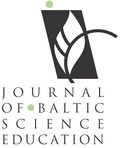EXAMINATION OF STUDENTS’ ENGAGEMENT WITH R-SPQ-2F OF LEARNING APPROACH IN FLIPPED SUSTAINABLE SCIENCE COURSE
| Title | EXAMINATION OF STUDENTS’ ENGAGEMENT WITH R-SPQ-2F OF LEARNING APPROACH IN FLIPPED SUSTAINABLE SCIENCE COURSE |
| Publication Type | Journal Article |
| Year of Publication | 2019 |
| Authors | Jeong, JS, González-Gómez, D, Conde-Núñez, CM |
| Journal | Journal of Baltic Science Education |
| Volume | 18 |
| Issue | 6 |
| Start Page | 880-891 |
| Pagination | Continuous |
| Date Published | December/2019 |
| Type of Article | Original article |
| ISSN | 1648-3898 |
| Other Numbers | E-ISSN 2538-7138 |
| Keywords | engagement, flipped-classroom, R-SPQ-2F, science learning, study approach, sustainable education |
| Abstract | The students’ engagement was deemed significant to research due to the changing study structures from course-based to student-centered and competence-based in sustainable science higher education. Still, its change and coping strategies is considered as somewhat unfamiliar learning environment. Research examined students’ engagement to the learning approach of a flipped-classroom model for sustainable science course with the Revised Two-Factor Study Process Questionnaire (R-SPQ-2F). It assesses research proposals, which students are utilizing to learning, and engagement and individual abilities as well. The research was conducted with the students enrolled in the “Atmospheric Pollution” course of the Environmental Science undergraduate program (n=64). The results obtained through the R-SPQ-2F showed the students’ number reaching higher “deep approach” in their learning increased at the course end, while it can be observed that the students’ number marking “surface approach” below the mean value was slightly lower (pre- and post-test comparison). It can be concluded that students are employing more engagement in their works and enhancing their personal skills as well with the teaching methodology. Results obviously specified that the study structure change was a phase into correct emphasis to improve students’ engagement in the flipped sustainable science education. |
| URL | http://oaji.net/articles/2019/987-1576226058.pdf |
| DOI | 10.33225/jbse/19.18.880 |
| Refereed Designation | Refereed |
| Full Text |
